

Windows 10 does a much better job of combining some of the classic features of the Start Button with the Start Menu tiles introduced in Windows 8. Even if you install the Classic Shell Start Button discussed here, I highly recommend you spend some time organizing you Start Menu tiles based on your interests. Be sure to resize ones that show you more information on a live tile when the size is Wide or Larger. Because I use a lot of programs I still like the Classic Shell Start Button for two reasons: The second column can be configured to give me quick, familar access to tools and folders, and the first column gives me another place I can pin other programs I frequently use in addition to displaying recently used programs. It also supports jumplists.
[The latest version of Classic Shell, 4.3.1 was released in November, 2017, you can see your current version at
the top of the dialog box by right-clicking on the Start button and choosing Settings]
The Classic Shell Start Button is a free program you can download and get back the features of the Windows 7 start button plus many new ones:
Just click on the Download Now button, this site isn't too bad, but many sites have ads that are easy to click on by mistake and end up installing malware you don't want.
When you install this, I strongly recommend ONLY installing the Classic Shell and the CS Update, not the other things that come with it. To do this use the little pull-downs and turn off the installation of Classic Explorer and Classic IE9. Before you click on Next, the setup window should look like this:
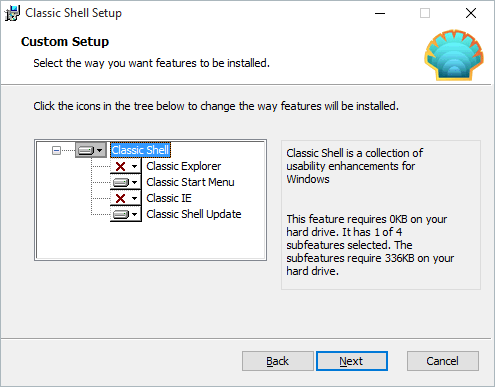
The defaults of the latest versions of Classic Start Button work much better than they did a few years ago. However, I do recommend a few changes, shown below. You can either make all the changes shown below, or download this XML file, and load the settings from that XML file using the pull-down next to Backup at the bottom of the Settings Menu:
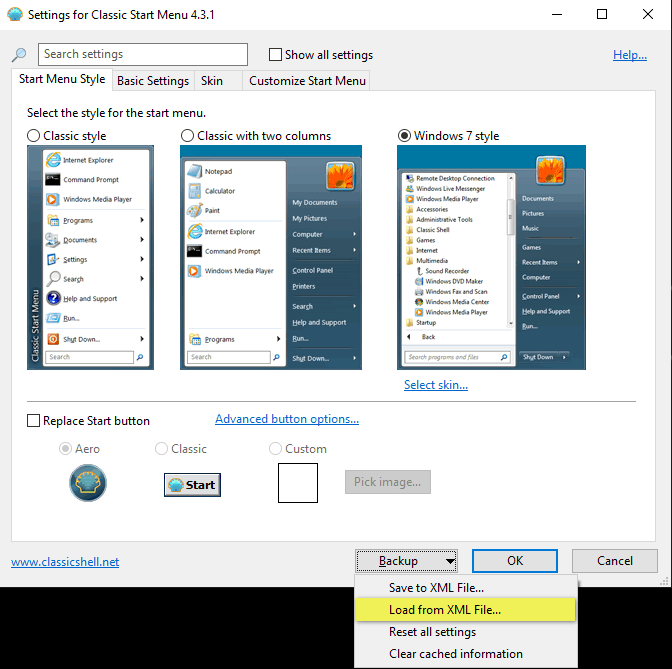
These settings menu is shown when you install Classic Shell, or can be accessed later by right-clicking on the Start button and choosing Settings. After choosing the XML file you just downloaded, click on OK and you're good to go. Nothing more is required.
Once you've installed Classic Shell, to bring up the standard Windows 10 Start Menu with all the tiles, press Shift+WinKey. If you want to stop using Classic Shell, on the General Behavior tab, uncheck the "Start automatically for this user" box. Next time you logon you'll be back to the Windows 10 Start Menu. Another option, if you find youself using the Windows 10 Start Menu frequently, is on the Controls tab click the radio button that says the Windows Key opens the Windows 10 Start Menu. If you do this then you must also click the radio button that says Shift+WinKey opens the Classic Shell Menu.
If you want to make manually make the changes instead of loading the XML file, here are the changes I recommend:
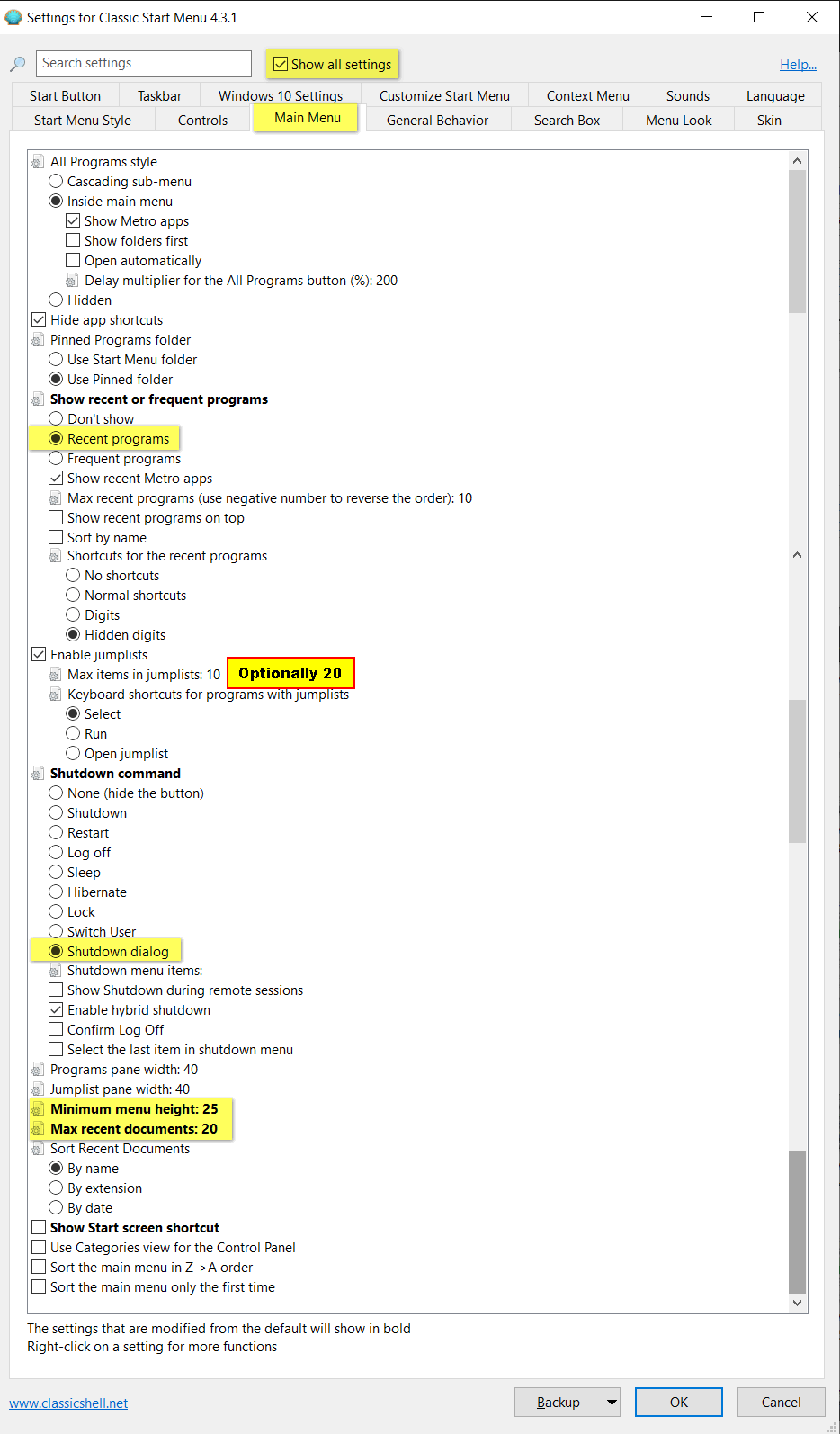
Note that once you make a change, the name of the category turns to bold. This is very useful later when you come back to the settings, it gives you a clue what you've changed from the initial defaults.
On the "Customize Start Menu" tab my choices end up looking like this:
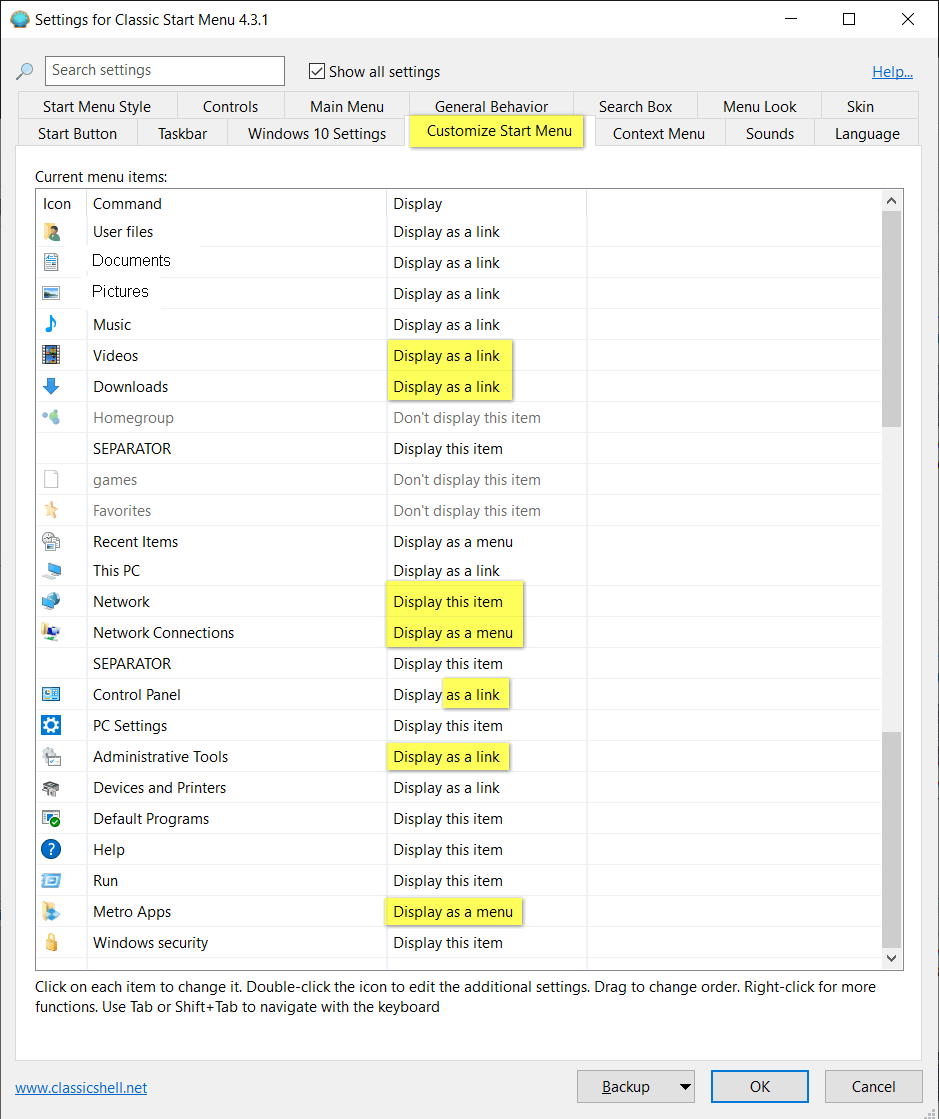
And I find highlighting newly installed programs, annoys me after a few hours so I turn it off:
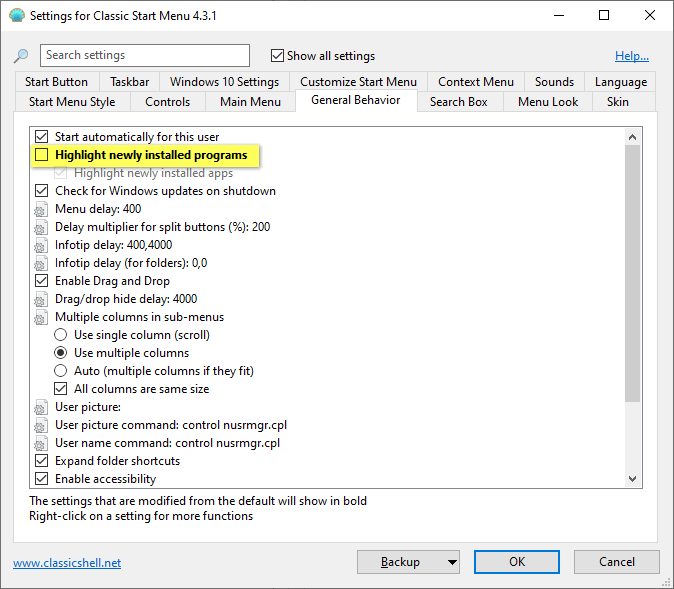
As you can see there are many more tabs, and over 100 features you can customize. If you enjoy using this Start Button you might want to do more customization to meet your own needs.
Be sure to pin programs or Apps you use frequently in one or more of these places:
Pin the programs and Apps you use the MOST to the Taskbar.
It's really easy to do from the desktop world, right-click on any program shortcut or name on the Classic Shell Start Menu and among the options listed you'll see the three choices Pin to Start Menu (Classic), Start, and Taskbar
Tip: Be sure the first nine programs pinned to the Taskbar are the same on all your machines. Both Windows 7 and Windows 10 machines. This will allow to use the same WinKey+# shortcuts on both. See Windows 10 Shortcuts. For example, my Taskbar currently looks like:
![]()
If I press 7 while holding down the WinKey it starts the Calculator I use. This is because, not counting the Start, Search, Cortana, and Task View Buttons the Calculator is the 7th program (counting from the left) pinned to the Taskbar.
Speaking of the Taskbar, I usually prefer to open File Explorer (aka Windows Explorer) with the "This PC" view instead of the Library view. You can do this with the WinKey+E shortcut, but I also like having a shortcut on my Taskbar that does this. Download this Computer Shortcut in a ZIP file, put it somewhere and then unzip the shortcut on your desktop; then pin it to the Taskbar. On my Taskbar (above) it's the icon between the one that looks like a old computer terminal with a T on it and the one that looks like a folder (File Explorer). You'll never see it highlighted (showing it's running), instead each time you press it you'll see the folder (File Explorer) icon highlighted again. Note: If you don't change Open File Explorer to "This PC" as shown on the Windows 10 Shortcuts page (above), Shift-Clicking on the File Explorer icon opens it to the Quick Access View and clicking on the new Computer icon opens it to the This PC view.
If you do change File Explorer to open to the This PC view, as I have. After it opens you can still get to the other view by clicking on the words "Quick Access" at the very top of the left hand column:
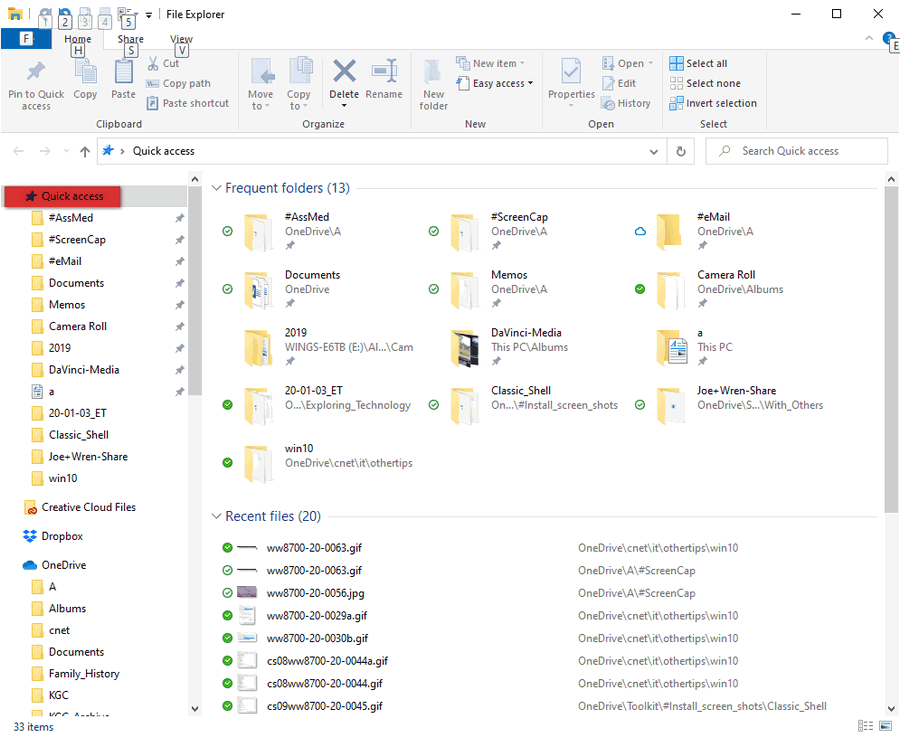
In Windows 10 when you delete all the files and/or folders currently selected it no longer asks you if you're sure you really want to do that. While many think this is an improvement, personally I find it too easy to hit the Delete key by mistake and like the confirmation. If you want to turn the confirmation back on, right-click on the recycle bin and choose Properties. You'll see this dialog:
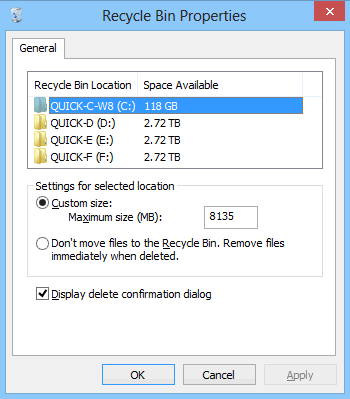
Check the box at the bottom to "Display delete confirmation dialog".
Suggested next choices:
ImagingTips.com Site Map
[an error occurred while processing this directive]